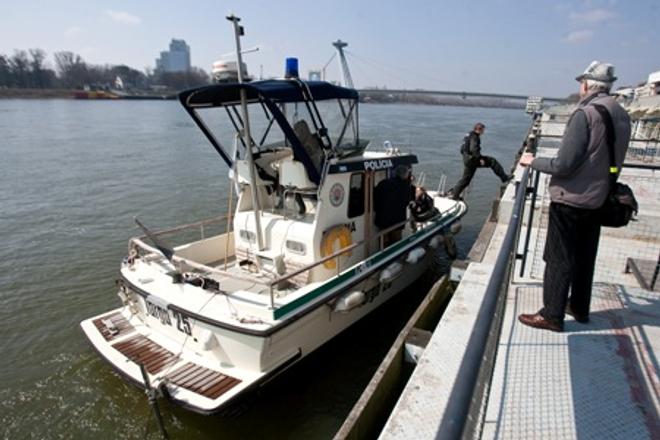THE SEARCH on Monday, April 8 for the remnants of a statue of Empress Maria Theresa proved unsuccessful. The results of the underwater archaeology research were presented a day later by Attila Tóth at the Pamiatky /Monuments fair in the Incheba fairground in Bratislava in a lecture called What The Danube Hides.
The SITA newswire wrote that the project was a follow-up to the discovery in 1950s of a part of horse and skirt of a Maria Theresa sculpture that once stood on the Danube bank near the today’s Ľudovéta Štúra Square (former Korunovančé námestie, Coronation Square). The original stature was toppled and thrown into the Danube by Czechoslovak legionaries in 1921.
“We have to disappoint those who hoped we would find the missing pieces of the mounted Maria Theresa,” Tóth told the TASR newswire. “In the area where the earlier fragments of this statue were found, we discovered three anomalies with our sonar – items of various sizes which could have come from a statue. But this can be confirmed only through diving research.” He explained that river research poses more problems than maritime searches. The water is less clear, limiting visibility, and quickly flowing water often drags objects along and sometimes leaves them buried under silt.
“The Danube was once a border river of the Roman Empire where many guardian towers and fortified harbours used to stand,” the Hungarian expert of the Budapest-based research group Argonauta said. “We use documents in our research, but as there were no maps before 1700, no battles where ships were sunk are drawn and recorded. This makes our hunting more difficult.” When the level of Danube declined in 2011, Toth’s researchers found remnants of a wooden ship, which they dated back to the early Middle Ages, around 1320. This is the oldest finding of a ship in the Carpathian Basin.
This recent expedition did make a discovery that could turn out to be significant. The researchers found a protruding wrecked ship under the gravel silt in one of the Danube branches. Because it was buried the wreck was not looted. Tóth, as quoted by TASR, said that it could be part of a legendary transport of jewels in 1526.


 Searching for Maria Theresa in the Danube River. (source: Sme - Gabriel Kuchta)
Searching for Maria Theresa in the Danube River. (source: Sme - Gabriel Kuchta)